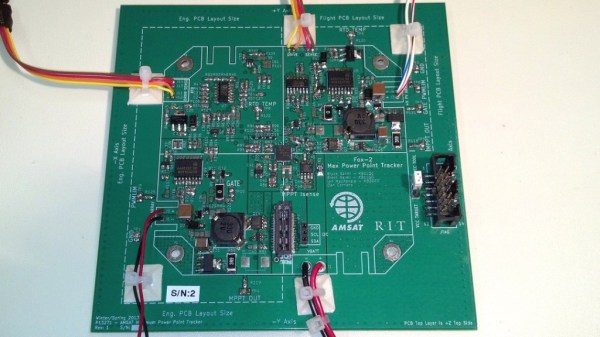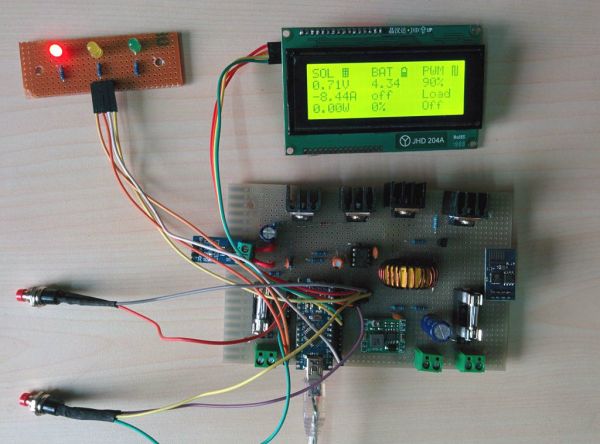AMSAT, the Radio Amateur Satellite Corporation, joined forces with students from Rochester Institute of Technology to create a MPPT attached to a Fox-1B CubeSat. It successfully launched into orbit on November 18th strapped to the back of a Delta II rocket. This analog MPPT, or Maximum Power Point Tracker, is used for optimizing the draw of a power cell in correspondence to the output of solar panels on the 10cm x 10cm satellite. In a nutshell, this works by matching the voltage of the two together. If you haven’t gotten a chance to play around with one of these first hand, Hackaday’s own [Elliot Williams] wrote up a thorough explanation of the glorious MPPT’s efficiency.
This little guy is currently hurtling along in an orbit every 90 minutes. During each of these elliptical trajectories, the satellite undergoes brutal heating and cooling cycles. The team calculated that this package will undergo a total of 29,200 orbits around Earth during its 5 year mission. This means that there are 29,200 tests for it to crack — quite literally — under pressure. To add another level of difficulty, the undergrad team didn’t have funding for automated board assembly. This meant that they had to hand solder over 400 micro components onto this board, adding additional human error to be accounted for in the likelihood of a failure. But so far, this puppy is going strong. This truly shows the struggles that can be overcome with a little elbow grease, hard work, and plain ‘ole good engineering.




















